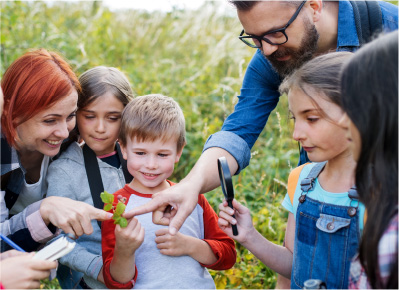April is National Child Abuse Prevention Month. This month, the Children’s Bureau in the Administration on Children, Youth, and Families encourages communities to increase awareness about child and family safety, permanency, and well-being. To develop prevention strategies, researchers have identified numerous risk factors, but also preventive factors to avoid violence in the lives of children. As part of the implementation, we can find out how important community work is for families and for preventing child abuse and neglect.
While legal definitions of child maltreatment vary by state, child maltreatment includes all types of abuse and neglect of a child under the age of 18 by a parent, caregiver, or another person in a custodial role that results in harm, the potential for harm, or threat of injury to a child. There are four common types of child maltreatment: physical abuse, sexual abuse, neglect (including educational neglect, medical neglect, and other forms), and emotional maltreatment.
Understanding Risk Factors To Aid in Child Abuse Prevention
The Center for Disease Control and Prevention has identified risk factors as characteristics linked with child abuse that are not direct causes of youth violence. Research on child maltreatment has increased our understanding of factors that make some populations more vulnerable to victimization. The National Child Abuse and Neglect Data System collects data for risks factors that we will mention below:
- Living in an impoverished neighborhood;
- Food insecurity
- Racism
- Limited access to support and medical services
- Mental health problems and disabilities
- Alcohol and drug abuse
- History of violent victimization
- Financial problems
- Social isolation and resource deprivation
- Inadequate housing
Statistics provide us with an understanding of the prevalence of child abuse, and they also can help identify risk factors to allow us to design effective interventions. Every year, the Children’s Bureau releases their Child Maltreatment Report and the 2020 estimates indicate:
- 3,144,644 children received an investigation or alternative response for reporting maltreatment.
- 618,399 children indicated maltreatment.
- 1,750 children died from abuse and neglect at a rate of 2.38 per 100,000 children in the population
- The percentages of child victims are similar for both boys (48.1%) and girls (51.6%)
- The youngest children are the most vulnerable to maltreatment where 25% of a 1000 children were under one year old
- Only in 0.4% of the cases is the victim that reports the violence. In most cases, the enforcement, educational, medical, or social service personnel are who report the cases.
Too often, children experience child abuse at the hands of trusted individuals with whom they interact daily. Also, investigators suggest that the disruptions associated with COVID-19 may have increased the frequency and intensity of this violence. From illness or loss of a parent to unemployment and the other facts like being at home, placed children at heightened risk for violence, neglect, and exploitation.
Giving Children The Opportunity To Speak Out Against Child Abuse
Protective factors are conditions or attributes in individuals, families, communities, or the larger society that mitigate or eliminate risk in families and communities. In essence, these are the things we can do to help with child abuse prevention! Taking a protective factors approach focuses on identifying and strengthening the factors that can buffer children and families from stress and promote positive parenting. This methodology emphasizes what families are doing well and provides support to help them build on their strengths. Some of the key protective factors include:
- caregiver resilience
- social connections
- knowledge of parenting and child development
- concrete support for caregivers
- social and emotional competence of young children
Based on the collaborative family-serving systems, there are initiatives for parents and caregivers to open a safe space to connect across differences, develop compassion and understanding of other peoples’ realities, disrupt stereotypes, and create stronger ties with each other. These safe spaces are also the key for kids. Giving children a voice against child abuse is critical to ending the cycle of victimization and perpetration. Each child is unique, with their own set of life experiences, perspectives, and observations, and these factors combine to shape their views on the issue. By allowing children to speak out, and share their stories and concerns openly, we can better understand the nature of youth violence and take steps to address it in a meaningful way.
At Believe in Me, we understand the importance of building community and trust. For this reason, the foundation provides grants to programs that are helping kids who need a coordinated plan they can buy into. In this scenario, community-based services, including counselors and social workers “wrap around” the child, their family, school, and community to provide a coordinated effort to get them back on track. These services are individualized to the child’s goals and guide them through legal trouble, develop a safe and stable living situation, calm their emotional state, improve academic performance, and build healthy relationships.
We invite you to learn more about our mission and help prevent child abuse in the community by providing protective factors for at-risk kids today!






